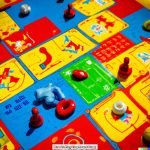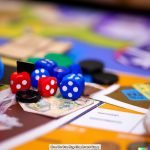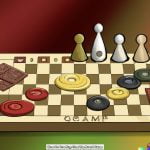Introduction
Clue is a popular board game where players try to solve a mystery by gathering clues. The object of the game is to deduce who the murderer is, what weapon was used and where the crime occurred. It has been around since 1949 and can often be found in most family game nights for both children and adults alike. While playing without the board game still lacks some of its charm, there are many advantages that come with it as well.
One benefit of playing Clue without the board game is that you can create whatever scenarios that you want. Since you don’t have the physical locations of the boards and pieces to limit your creativity, this means that you can really utilize your imagination to come up with the craziest murder mysteries for everyone to enjoy. Additionally, it also allows for more flexibility regarding which characters become suspects, how numerous weapons are presented in the case, or even which room becomes a key piece in solving said case.
Gather Materials and Setting Up
To play Clue without the board game, start by gathering items needed to make the game. These might include paper and pens for keeping track of guesses, a list of possible locations or characters that are used instead of a board and pieces, and perhaps even some dices. You might also want to include cards that have information on them including potential locations as well as suspects, weapons and alibis associated with each suspect.
Once you have gathered the necessary materials it’s time to customize traditional Clue rules and modify them to fit your game. This could include deciding how many players there will be ” traditionally three to six players work best – and designating one player as the host or “detective” who will get extra information about the case. Each player should receive a sheet of paper with an outline of all suspects, weapons, locations, and alibis available for investigation so they know what clues they need to look out for. Next set up rules for how questions can be asked ” who can ask which suspicions etc.. – before finally setting up unique win conditions such as getting all answers right in order to win. Once everyone understands their roles its time kick off your custom made Clue without the board game!
Preparing Clue Cards
Before you can play Clue without the board game, you will need to create clue cards with suspect, objects, and secrets. Each card should indicate a specific suspect (such as Captain Black or Professor Plum) for players to guess. You can create these cards using paper or a computer program and then print them out. If using paper drawing out of card symbols such as magnifying glasses and daggers as clues or decorations.
Once the cards are created divide up all the cards between the players with at least one card of each color representing a suspect and one card of each type representing an object. Try to make sure each player has equal amount of cards differing in character. Players should also have their own secret which only they know so that no one else can guess it directly. It might be useful to create copy that includes all the secrets on it, this way everyone can cross off possibilities already revealed through questioning as they progress through the game.
Plan Ahead
Before playing Clue without the board game, it is important to plan ahead. Have each of the players agree on a set of rules that everyone is comfortable with. Outline these rules clearly and decide how many players will be participating in the game. The standard amount is between two to six players, but more can join in if everyone agrees. Be sure to designate one person as the “designated Mystery Solver” ” this should be an impartial player who will have the final say in determining who has won or lost each game. It is also necessary to create a list of Clue suspects and murder weapons (the traditional game uses Professor Plum, Mrs. Peacock, Colonel Mustard and more) that will add an extra challenge for each round of play.
Scorekeeping
Scorekeeping is an important part of playing Clue without the board game. Without the physical components of the game, it can sometimes be difficult to keep track of who is winning. There are several methods to track progress in a game of Clue that don’t require a board.
One simple method for scorekeeping is to use tally marks on paper. Each player should have their own sheet of paper with tallies representing each round they play. At the end of each round, players can update their respective tallies and compare at the end of the game. Another common method for tracking progress in Clue is using colored beads, poker chips or some other small item instead of tallies. Players could receive a certain color or number at the beginning and hold onto that throughout the game as a representation of how many rounds they’ve won or lost.
Other digital methods like score-tracking apps and online sites also exist and provide a more complex way to track scores during games. For example, one app may allow users to customize boards based on difficulty, capture electronic notes about movement and evidence collection and send notifications when there are changes in rank. Finally, if all else fails, use pieces from another game like Monopoly or Scrabble, which will provide a more visual way for players to differentiate between rounds played and wins/losses tallied up across multiple games.
Setting the Scene
Before playing the game, there are a few steps required to set the scene. For those who are playing without the actual board game, it is best to establish three rooms throughout the house. These should be close together and at least one room needs to be large enough to hold all players seated around a table. Mark each of these rooms with either a sign or coloured ribbon.
Next, hide clues throughout each one of these three rooms. This could include pieces of paper with pictures, words, objects or notes that may help players determine how they need to progress during their Clue game. Afterwards, agree on an order in which players can move through the rooms and confirm everyone has understood the rules of the game – such as if a player finds out who/what did ‘it’ as well as finding all clues then they are declared winner! Finally, decide which weapon was used for ‘it’ and make this known by placing it in one of the three designated rooms. And now you are ready for some proper mystery action!
Playing the Game
To play Clue without the board game, you need the included cards that come with the set. These cards include a list of suspects, weapons and locations which are used to ascertain who committed the crime. Each card includes an image representing a suspect, weapon or location and is color-coded according to its category (Suspects are yellow, Weapons are green and Locations are blue). Shuffle these cards separately so they mix randomly and deal out nine of them as evenly as possible among all players – three in each pile. Place the remaining five cards in a “Detective’s Notebook” face down which will become your clue solving “reveal” deck.
In addition to applying certain rules ” such as no looking at another player’s hand or peeking in the notebook ” each time it will be someone’s turn, they must have an itinerary for their turn. Itineraries should include starting with making a hypothesis about what happened based on what other players have said previously. They should also select two new cards from either the Suspects, Weapon or Location Decks respectively and proceed to ask other players questions – usually ones such as “Are you sure Miss Scarlet could not have taken part?” or “Do you really believe it was done using rope?”
Once asked the questions, that player must then answer honestly – even if it eliminates themselves from being a suspect. Accusations can then be made by any player but they should base this on evidence obtained during questioning sessions and then use their Detective’s Notebook as discovery proof by flipping over two of its random cards once all supports agree that one person is more likely than others to have done it. The winner will be whoever has correctly guessed where the murder took place, who did it, which weapon was used!
Sudden Death Rule
One way to play Clue without the physical board game is with the Sudden Death Rule. This rule places all players in a high-stakes race to solve the mystery and be declared winner. The catch? All player’s pieces must remain on the board until someone can make an accusation that holds up under questioning.
In this game of Clue, each player takes turns making suggestions or accusations (for example: “Colonel Mustard did it with the Revolver in the Billiard Room”). They can then question another player by asking if any evidence contradicts their claim. The questioned player can then answer with a card they possess and prove whether or not what has been suggested is true or false. If no weapon, person, or room card is provided to disprove the suggestion, then it stands and must be taken into account for future accusations/suggestions made during later turns.
If multiple players are blocking each other’s advances”and advancement on the board is required in order for continuation of play”players may form alliances to help defeat all other opponents more quickly. An alliance between two players allows them to make suggestions together throughout their turns. Then, both players can cross-question each other at any point, similar to how one would ask another player in a usual game of Clue; this allows faster access as both players have twice as many cards from which to gain evidence from. Whoever makes a correct accusation first inside their alliance wins!
Wrapping Up
Congratulations! You have made it to the end of the game! After all players have revealed their cards, it’s time to declare the winner. The player who first guessed what killer committed the crime, with what weapon, and in which room is the victor. If you are still unsure of who has won at this point, count up all remaining cards players hold ” whoever has fewer cards is likely the winner.
Once a winner has been determined, take a moment to celebrate their victory. Enjoy a slice of cake or a sip of your favorite beverage as you relive moments from your game that may have explored hidden depths of your friends and family relationships.
Finally, don’t forget to discuss adjustments for next time before ending with one final victory toast. One way to freshen up the game is extending an invitation for each player to suggest one rule change for next game night. Particularly clever adjustments might make it into future games ” so come up with something creative!
Conclusion
Playing Clue without the board game has been an interesting experiment in playing a classic favorite without its traditional accompaniment. We were surprised to find how much creativity it infused into our game, providing a wide array of possible permutations in trying to solve the case looming before us. It also demonstrated the power of cultivating strong group dynamics, as we relied on one another to make deductions and share ideas for strategies. Even though we missed the physical presence of the game’s iconic pieces, we still had a great time and enjoyed successful outcomes through collaboration and a bit of luck ” all of which made it one of our more memorable gaming experiences!

I love playing all kinds of games – from classics like Monopoly to modern favourites like Ticket to Ride.
I created this blog as a way to share my love of board games with others, and provide information on the latest releases and news in the industry.





